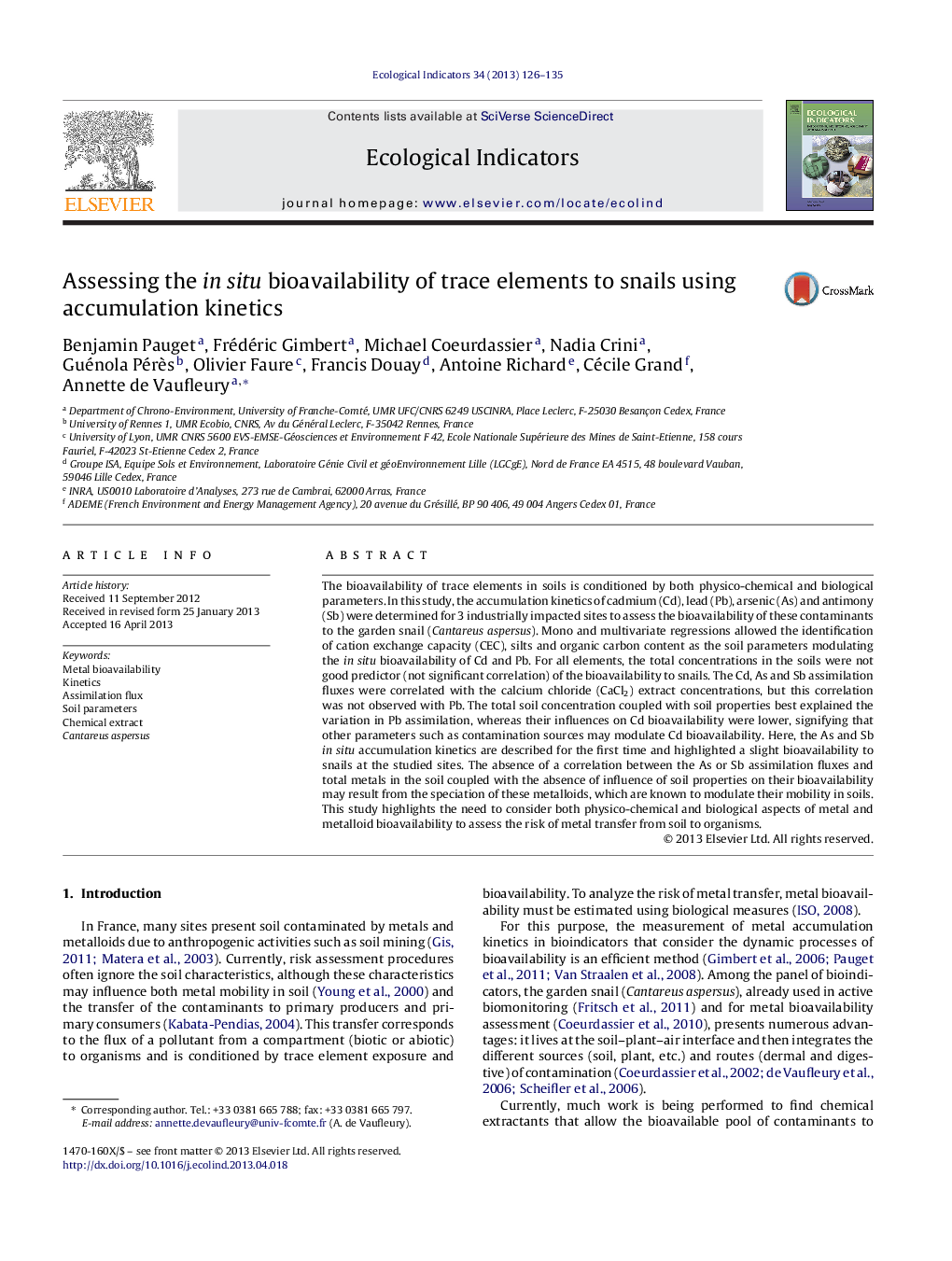| Article ID | Journal | Published Year | Pages | File Type |
|---|---|---|---|---|
| 6295241 | Ecological Indicators | 2013 | 10 Pages |
Abstract
The bioavailability of trace elements in soils is conditioned by both physico-chemical and biological parameters. In this study, the accumulation kinetics of cadmium (Cd), lead (Pb), arsenic (As) and antimony (Sb) were determined for 3 industrially impacted sites to assess the bioavailability of these contaminants to the garden snail (Cantareus aspersus). Mono and multivariate regressions allowed the identification of cation exchange capacity (CEC), silts and organic carbon content as the soil parameters modulating the in situ bioavailability of Cd and Pb. For all elements, the total concentrations in the soils were not good predictor (not significant correlation) of the bioavailability to snails. The Cd, As and Sb assimilation fluxes were correlated with the calcium chloride (CaCl2) extract concentrations, but this correlation was not observed with Pb. The total soil concentration coupled with soil properties best explained the variation in Pb assimilation, whereas their influences on Cd bioavailability were lower, signifying that other parameters such as contamination sources may modulate Cd bioavailability. Here, the As and Sb in situ accumulation kinetics are described for the first time and highlighted a slight bioavailability to snails at the studied sites. The absence of a correlation between the As or Sb assimilation fluxes and total metals in the soil coupled with the absence of influence of soil properties on their bioavailability may result from the speciation of these metalloids, which are known to modulate their mobility in soils. This study highlights the need to consider both physico-chemical and biological aspects of metal and metalloid bioavailability to assess the risk of metal transfer from soil to organisms.
Related Topics
Life Sciences
Agricultural and Biological Sciences
Ecology, Evolution, Behavior and Systematics
Authors
Benjamin Pauget, Frédéric Gimbert, Michael Coeurdassier, Nadia Crini, Guénola Pérès, Olivier Faure, Francis Douay, Antoine Richard, Cécile Grand, Annette de Vaufleury,
